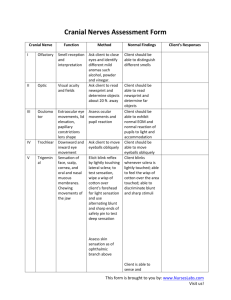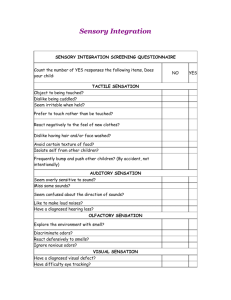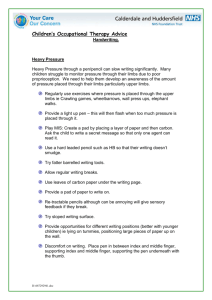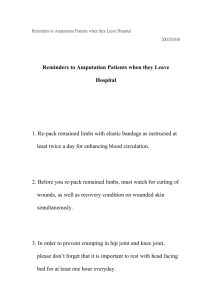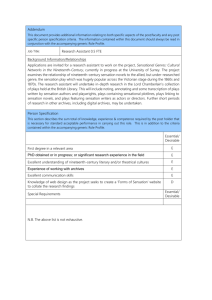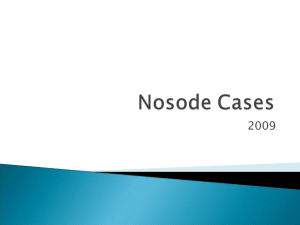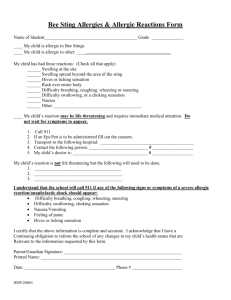Document
advertisement
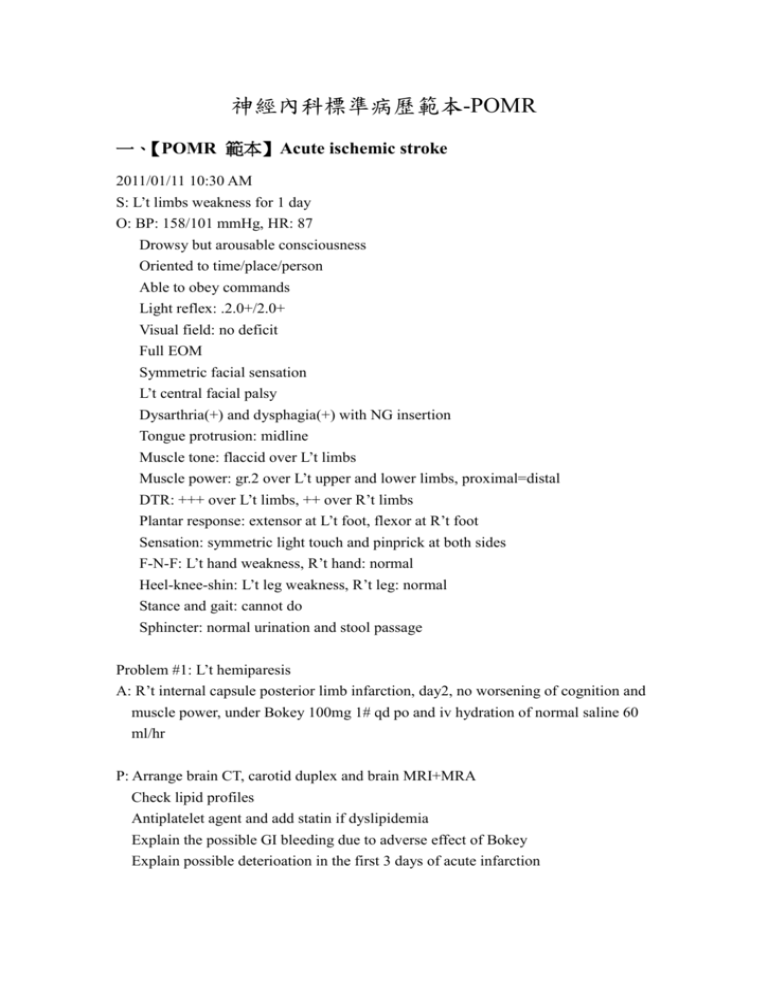
神經內科標準病歷範本-POMR 一、【POMR 範本】Acute ischemic stroke 2011/01/11 10:30 AM S: L’t limbs weakness for 1 day O: BP: 158/101 mmHg, HR: 87 Drowsy but arousable consciousness Oriented to time/place/person Able to obey commands Light reflex: .2.0+/2.0+ Visual field: no deficit Full EOM Symmetric facial sensation L’t central facial palsy Dysarthria(+) and dysphagia(+) with NG insertion Tongue protrusion: midline Muscle tone: flaccid over L’t limbs Muscle power: gr.2 over L’t upper and lower limbs, proximal=distal DTR: +++ over L’t limbs, ++ over R’t limbs Plantar response: extensor at L’t foot, flexor at R’t foot Sensation: symmetric light touch and pinprick at both sides F-N-F: L’t hand weakness, R’t hand: normal Heel-knee-shin: L’t leg weakness, R’t leg: normal Stance and gait: cannot do Sphincter: normal urination and stool passage Problem #1: L’t hemiparesis A: R’t internal capsule posterior limb infarction, day2, no worsening of cognition and muscle power, under Bokey 100mg 1# qd po and iv hydration of normal saline 60 ml/hr P: Arrange brain CT, carotid duplex and brain MRI+MRA Check lipid profiles Antiplatelet agent and add statin if dyslipidemia Explain the possible GI bleeding due to adverse effect of Bokey Explain possible deterioation in the first 3 days of acute infarction 二、【POMR 範本】Guillain-Barré syndrome 2011/01/11 10:30 AM S: double vision with four-limb weakness for 2 days O: BP: 128/83, HR:74 Clear consciousness and well-oriented Right partial ptosis EOM: paresis of the right medial rectus muscle Facial diplegia Weakness of the neck extensor especially in sitting position Muscle power of four-limb was grade 3 in the proximal muscles and grade 4 in the distal ones DTR: generalized areflexia Sensation: decreased pinprick sensation at the wrist and mid-leg area, and decreased vibration sense on the fingers and toes Problem #1: double vision with four-limb weakness A: Acute quadriparesis with generalized areflexia and multiple cranial neuropathy, suspected Guillain-Barré syndrome, in progression P: Arrange emergent NCV CSF study after brain CT Start plasma exchange if Guillain-Barré syndrome was confirmed by laboratory studies Inform the family the use of IVIG, which was not covered by the health insurance Watch out for respiratory distress 三、【POMR 範本】Brown-Séquard syndrome 2011/01/11 10:30 AM S: Right lower limb and trunk numbness for 4 days O: BP: 165/98, HR: 91 Clear consciousness and well-oriented Left side miosis and ptosis Full EOM without nystagmus Symmetric facial expressions No dysarthria or dysphagia No tongue deviation Left side hemiparesis: MP gr.3, equally in proximal and distal Sensation: decreased pinprick sensation from the right lower limb to the trunk without sacral sparing but preserved vibration sense, joint position sense Sensory level at T5 on the right side DTR: generalized hyporeflexia Coordination: left limb dysmetria, left side deviation during sitting and walking Sphincter function: intact Problem #1: paresthesia in the right lower limb and trunk A: Suspected left upper cervical spinal cord lesions, in progression P: Arrange cervical and thoracic spinal cord MRI with contrast Consult NS if there was a space occupying lesion Arrange CSF study if no mass lesion Arrange rehabilitation Encourage the patient to do rehab to prevent disuse atrophy 四、【POMR 範本】Disturbed consciousness 2011/01/11 10:30 AM S: unavailable O: Stuporous consciousness Light reflex (direct/indirect) was impaired and the pupil size were 4.0 mm bilaterally Skewed eye position and presence of ocular bobbing Corneal reflex: -/Decreased gag reflex bilaterally Vestibulo-oculocephalic reflex: -/Motor response: decerebrate posture on pain stimulation DTR: +++ to ++++ over four limbs Bilateral extensor plantar responses Problem #1: Disturbed consciousness A: Acute mental status changes, no improving P: Brain CT and CSF study Laboratory workup for CBC, biochem, etc Intensive monitoring of vital signs and neurologic status Explain the possible causes and outcomes to the families. 五、【POMR 範本】Cheirobuccopedal Syndrome 2011/01/11 10:30 AM S: Numbness confined to the left hand, foot and intraoral cheek O: BP: 150/85 mmHg, HR:85 Conscious and oriented Visual field: no deficit Full EOM Facial, including mouth angle sensation: no deficit Symmetrical facial expression Full MP over four limbs Sensation: a subjective 80% decrease of pinprick pain and 50% decrease of cotton fine touch at left intraoral cheek, hand and foot; and 50% decrease of vibratory sense at left hand and foot; positional joint sensation: no deficit Corneal reflex: preserved DTR: normoreflexia over four limbs Coordination: normal Steady gait Problem #1: Abrupt onset of numbness confined to left hand, foot and intraoral cheek A: Acute sensory deficit confined to the left hand, foot and intraoral cheek, suspected CVA, active P: Arrange brain CT, carotid duplex and brain MRI+MRA Check lipid profiles Antiplatelet agent and add statin if dyslipidemia Explain the possible GI bleeding due to adverse effect of Bokey

